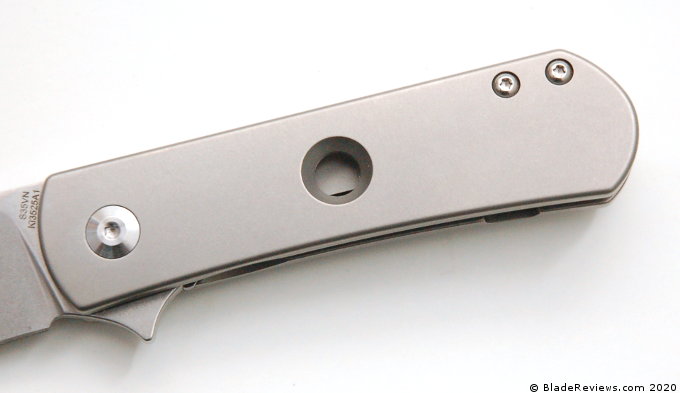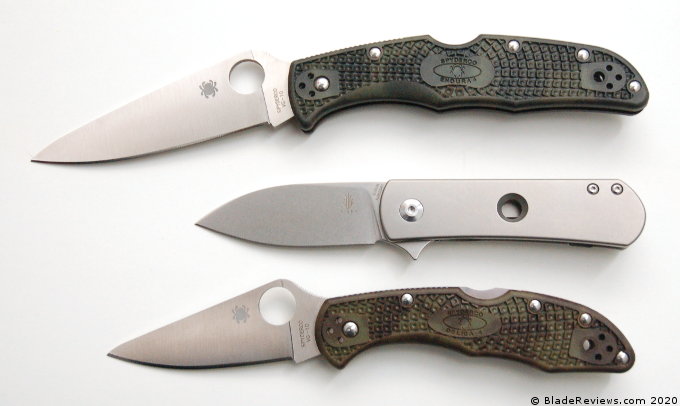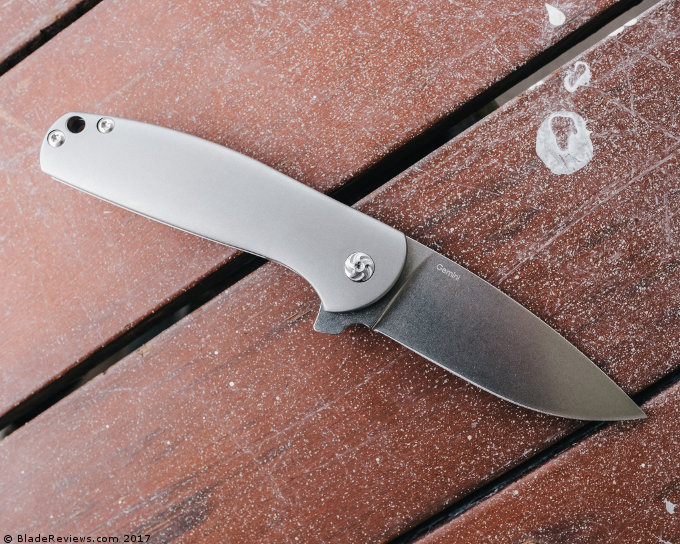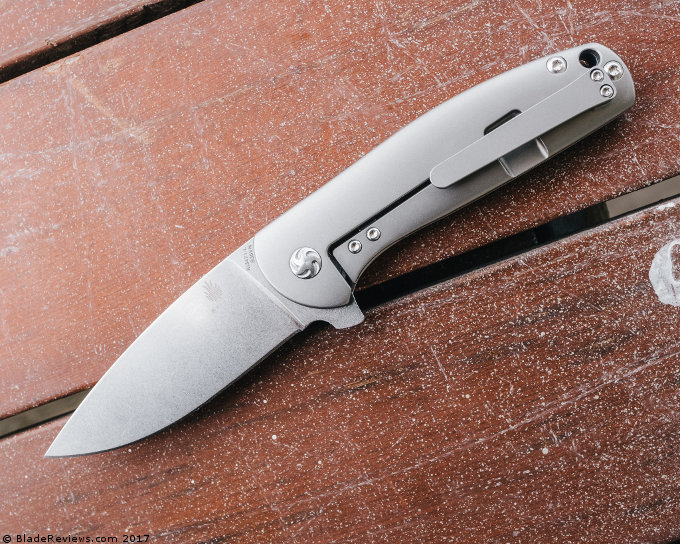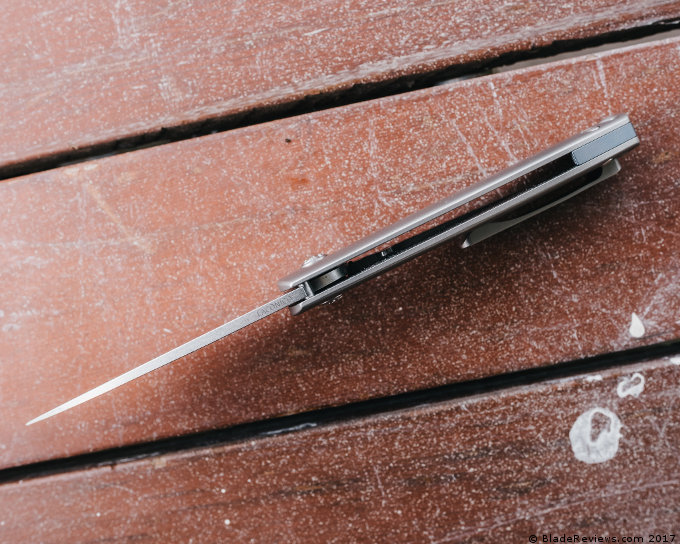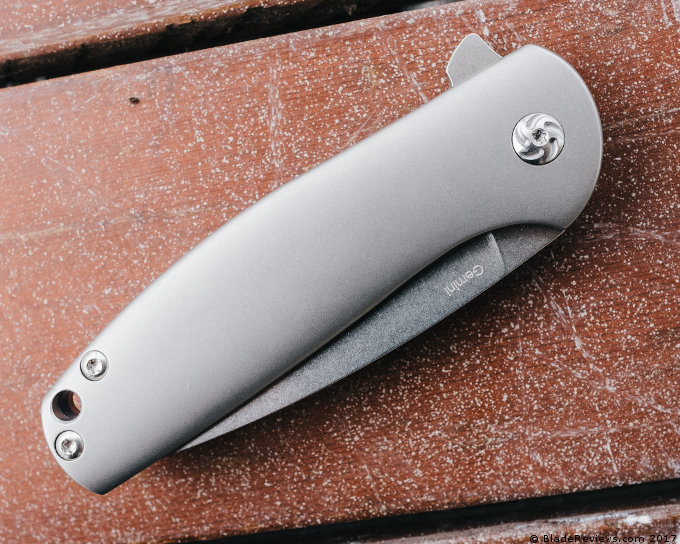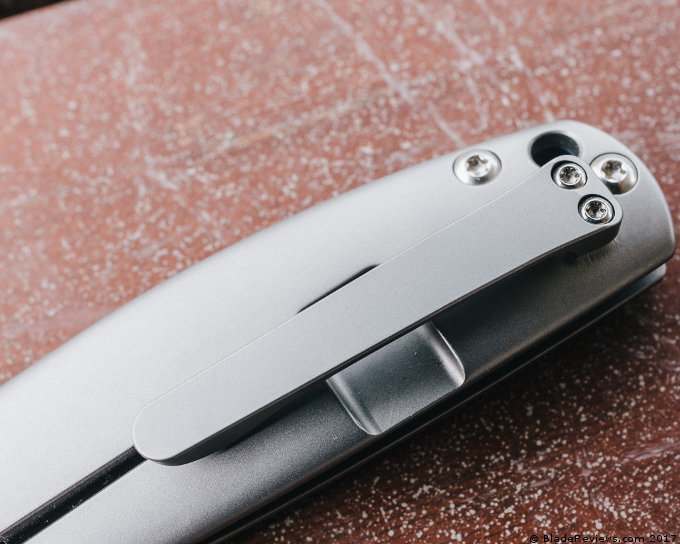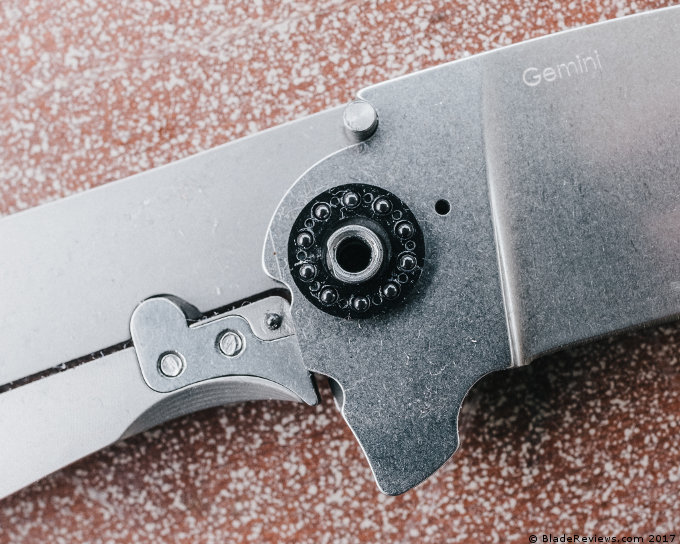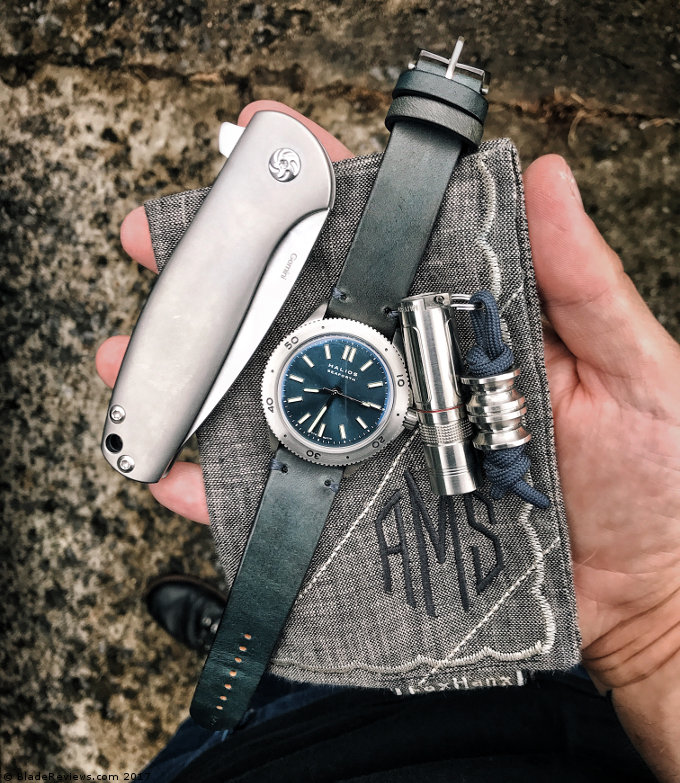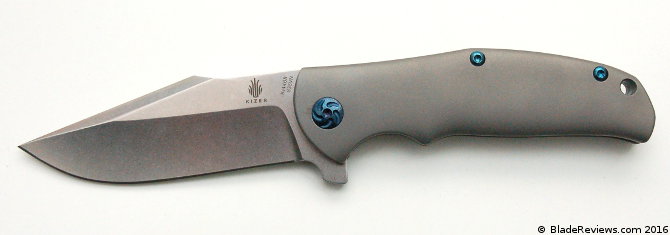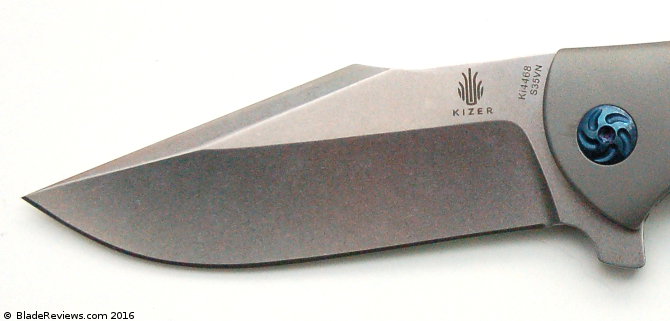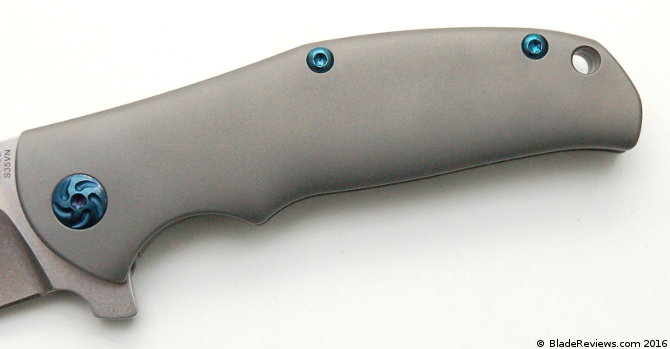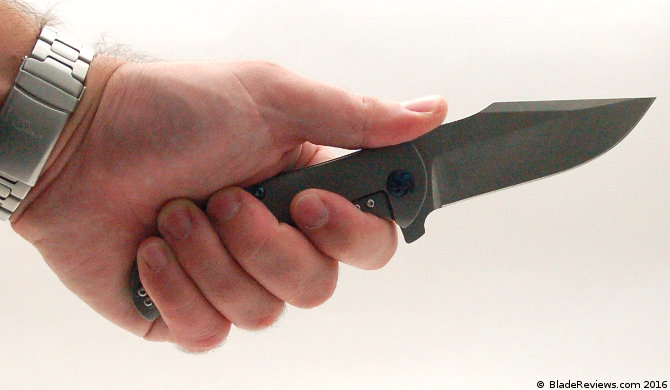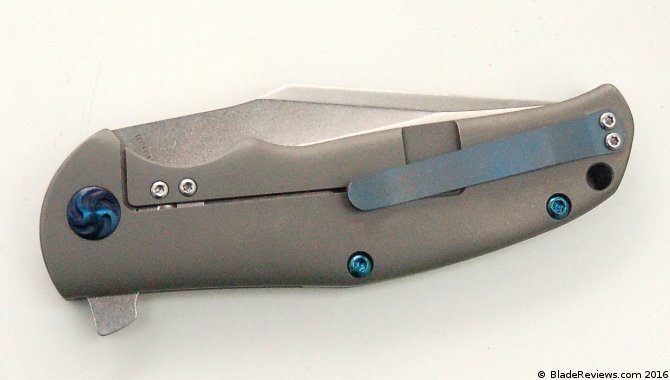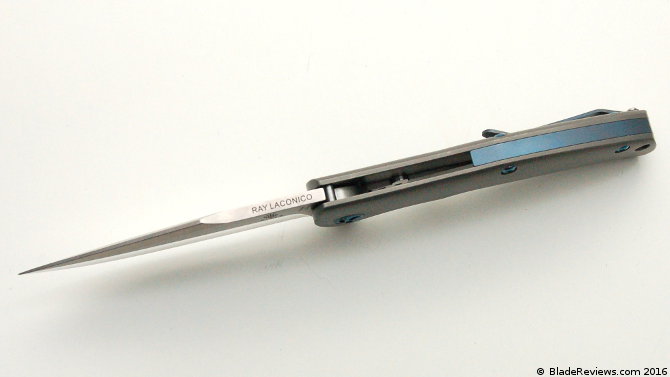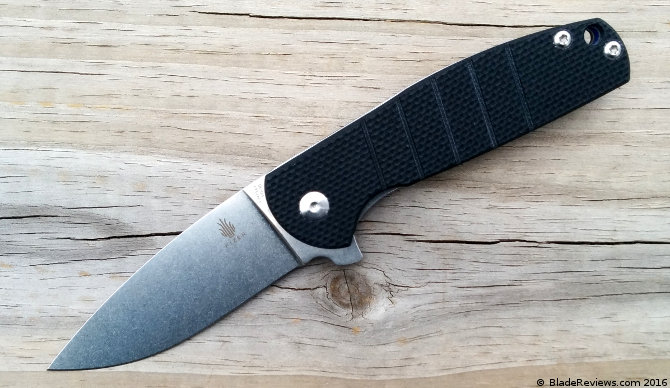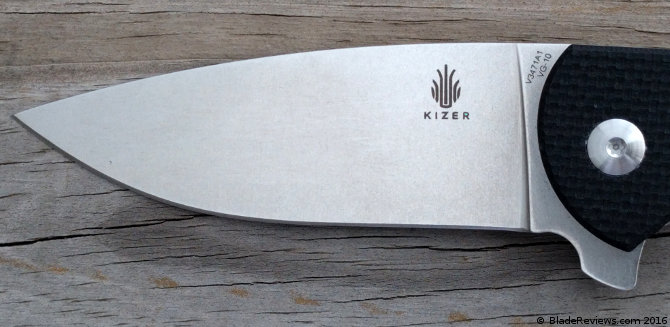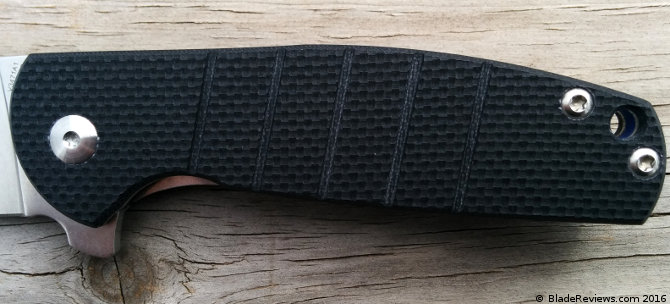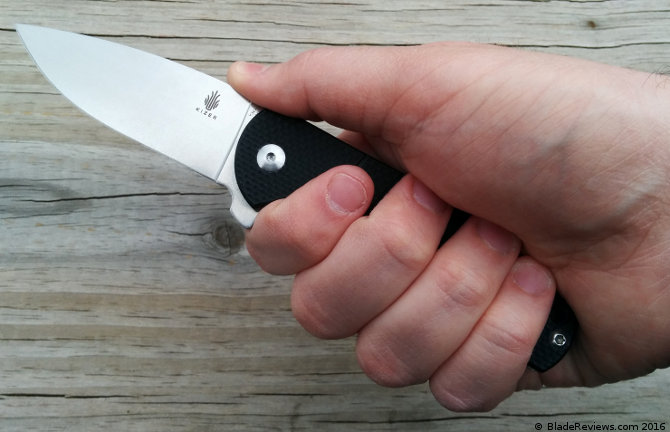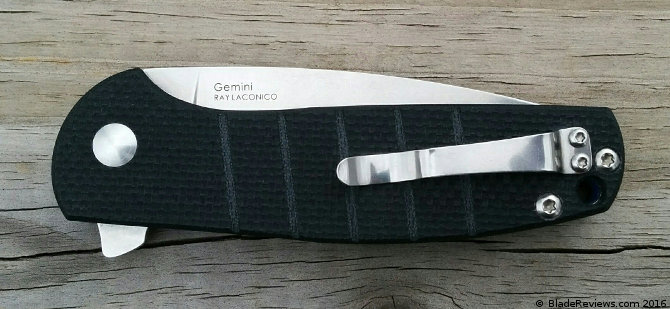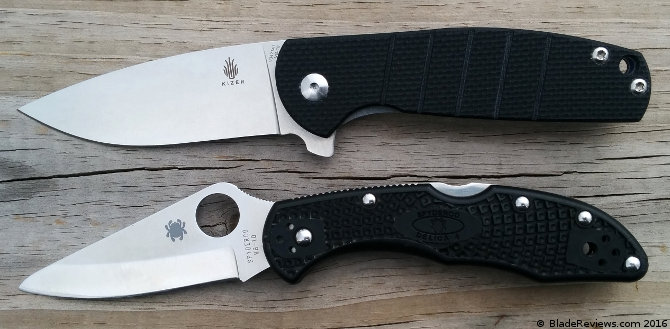Ray Laconico designs some elegant knives. I like the clean lines, and the practicality of his pieces. I’m not alone, and over the past few years his work has taken off. Kizer was smart to collaborate with him, and the results so far have been excellent.
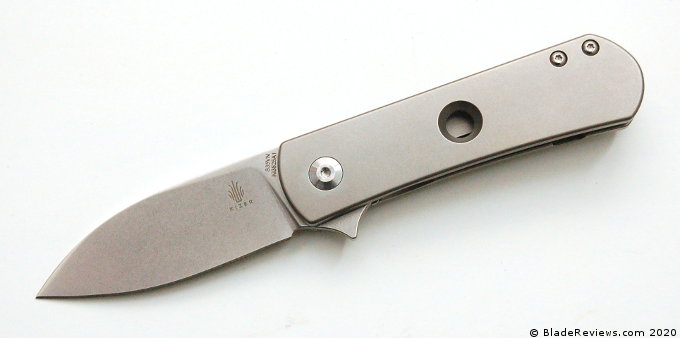
Buy the Kizer Yorkie at BladeHQ
We previously reviewed the Intrepid, and the Gemini. He has gone on to collaborate with other companies, including Alliance Designs, where the focus appears to be on higher end collaborations. The Kizer Yorkie is more approachable. It retails for around $150, still a lot of money but a fraction of what the Alliance Designs pieces cost, yet it still has a timeless look and is made from premium materials.
All knives reviewed are bought with my own money unless stated otherwise. I bought this particular knife with my own money. I’ve mentioned this before, but it probably bears repeating as Kizer has provided us with a few knives to review in the past.
General Dimensions and Blade Details
The Yorkie has an overall length of 6.125″, a 2.5″ blade, weighs 2.93 ounces and is made in China. On it’s own it doesn’t give me the impression of being a smaller knife, but the Yorkie is a smaller knife and it compares more favorably to a Mini Griptilian or even a Dragonfly II than the Delica. Here is a size comparison so you can see for yourself:
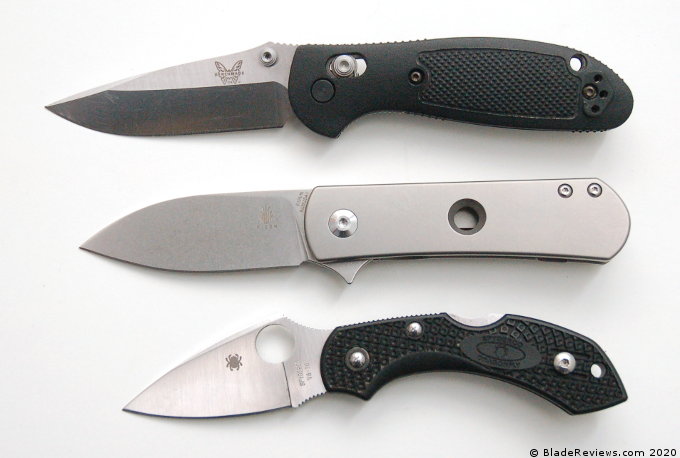
Perhaps part of what gives the Yorkie the illusion of being larger than it actually is, is the clean, near continuous line from pommel to blade tip. Laconico manages to tease out both a lot of handle and blade with this design. That, combined with substantial full titanium handles, lend the Yorkie some substance. Also, in hand the Yorkie actually feels more substantial than the slightly bigger Mini Griptilian.
The blade is an exaggerated drop point. It’s almost hawkish in appearance, yet it is also close to being a spear point. The simplicity of the blade shape is further accentuated by the almost full flat grind. You can see the slightest bit of flat at the top connecting with the ricasso, but beyond that you have essentially a full flat grind. The blade finish is a fine stonewash. It is a clean and functional look that matches the rest of the design.
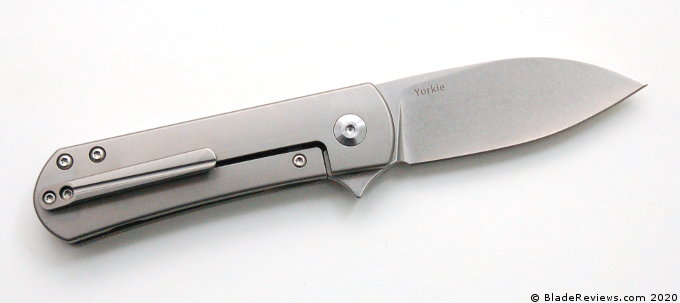
For blade steel we have S35VN. Standard fare for a knife like this. For the uninitiated, this is a higher end American steel developed by steel manufacturer Crucible in conjunction with Chris Reeve, and was formulated as a predecessor to S30V and developed specifically for cutlery.
It may not have the “Gee Whiz” factor of some of the more exotic steels, but I certainly welcome it on this knife. I have always appreciated S35VN as a practical choice for a daily carry knife, and think it was a good selection for the Yorkie. In practice, this blade takes a fine edge and is easy to maintain. I haven’t had much in the way of issues with rust or corrosion with S35VN either.
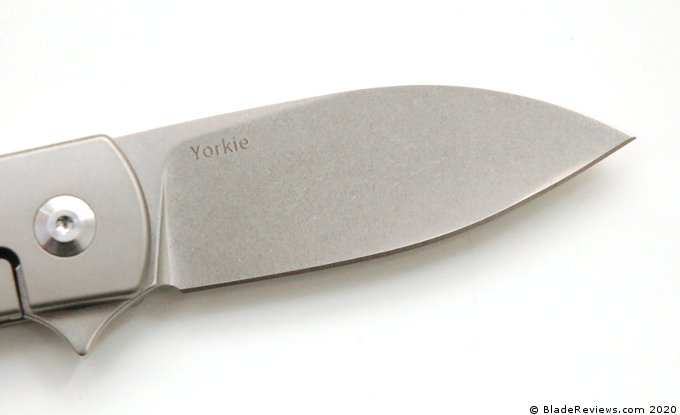
The blade geometry on this knife is quite good, and will easily accomplish the typical EDC tasks you would expect a small knife like this to tackle. Packages and mail are no problem. Light food prep, including cleanly slicing apples, is no problem thanks in part to the wide blade and lean grind. The Yorkie is also capable of tougher tasks, and I’ve used it while working in the yard. In a pinch it can pass through a palm frond, or assist with opening a bags of mulch. All told the blade is well considered and should meet most people’s needs.
Handle and Ergonomics
The Yorkie’s handle is 2 slabs of solid titanium separated by the pivot and 2 stainless steel stand offs. The Yorkie revels in its simplicity, and can pull it off by being so well executed. For example, the pocket clip screws are flush with the inside of the handle. No ugly screws are poking out into the handle like you might find on lesser knives. Also, the handles have been given just the slightest amount of beveling. You might need to squint, but the handles are not perfectly flat. Instead, there is a slight almost imperceptible radius to the entire outside of the handle. It’s these kinds of little details that subtly elevate the Yorkie. The overall fit and finish is great.
The only contrast on the handle is the bright stainless hardware, and the only ornamentation is a single hole fixed dead center on the show side. Even that hole has been given careful attention; there isn’t a machining mark to be found. I don’t know why exactly it was placed on the handle, except for perhaps to provide a little visual interest. I’m not sure if it rises to the level of addition by subtraction, but it does provide a focal point at least.
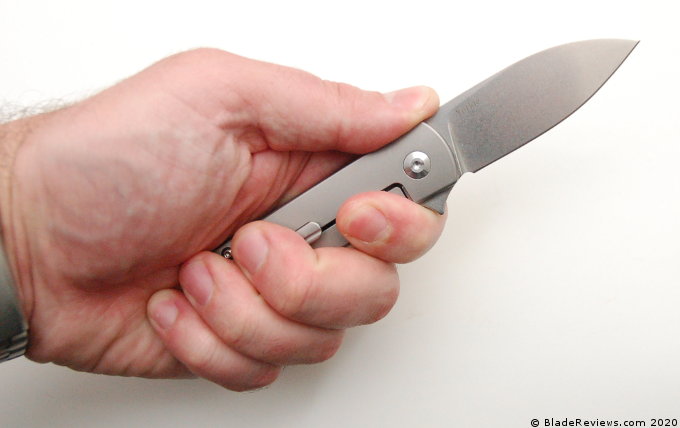
For a smaller knife, I’d say the ergonomics are pretty good. It’s not the magic trick of the Dragonfly 2, but there is a good amount of usable space on this smaller handle. This is thanks in part to the simple design and the small forward finger choil created by the flipper tab. There is just enough room to get your index finger in.
If you rely on just the titanium handle I’d say its a 3.5 finger handle for me, and probably a cramped full 4 finger grip for most. However, that finger choil allows you to spread out and really get comfortable with the Yorkie. The thick titanium handle also helps, and gives you something to grab onto. There is no jimping or texturing to speak of, but the simple boxy handle offers enough traction on its own. At least for my pedestrian purposes.
The pocket clip is a small milled titanium clip. I’ve always enjoyed a well executed milled clip, and I’m pleased to say that spring retention on this clip is excellent. The knife easily slides into the pocket, but is also firmly held in place. It isn’t a deep carry clip, but the Yorkie is still fairly discrete.
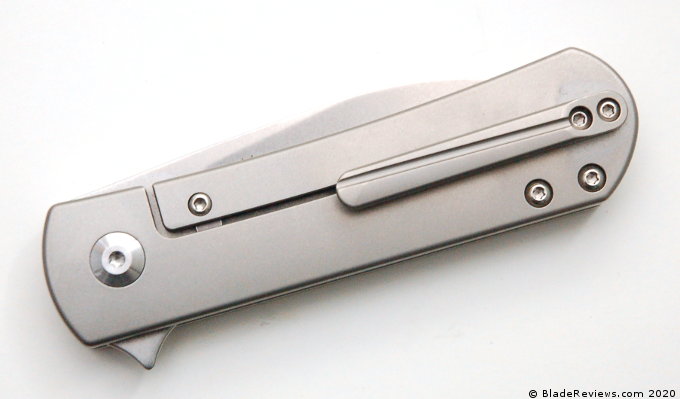
There is a groove milled into the pocket clip that blends in with the lock bar cut out. I haven’t seen this on a knife before. It’s kind of arbitrary, but like the hole in the handle, I think it was an attempt at injecting a little personality into the design. I don’t mind it, but I don’t fully “get” it either.
Here is your shot of the Yorkie in the pocket:
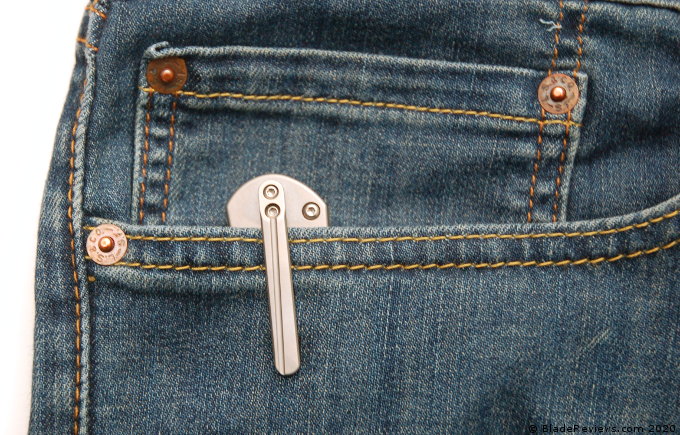
Deployment and Lockup
This is a small titanium framelock flipper. The flipper tab pokes out from the back of the handle prominently. I think that is good as it doesn’t have any texture on it. With a small knife like this, a poorly designed flipper tab runs the risk of the knife being fiddly. The Yorkie isn’t fiddly, but still, there is a little compromise with a small flipper like this. This isn’t the easiest knife to flip open. The detent is also good, but not great. I’d say it’s a “6” on a scale from 1-10. I’d prefer to see it more like a 7 or 8. It’s good but not great. The knife runs on caged bearings, and the action is smooth and easy.
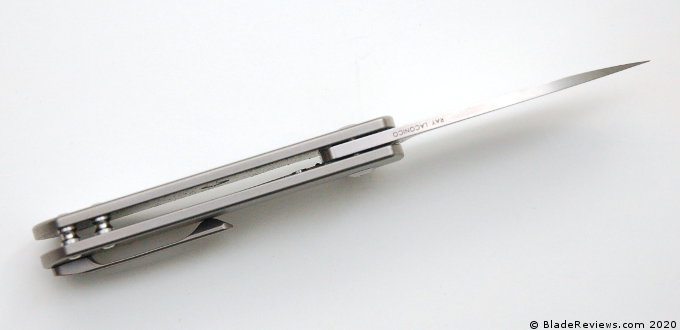
For lockup we have a titanium framelock with a stainless steel lockbar insert. Kizer knows how to make a framelock, and the Yorkie is no exception. The lockup is early and rock solid. Disengaging the lockbar is easy thanks to some substantial cutaways in the handle. No complaints with the lockup. My knife also came with a perfectly centered blade and a nice nylon and felt lined pouch.
Here is a parting size comparison with the Delica and Endura:
Kizer Yorkie Review – Final Thoughts
Ray Laconico has built up significant momentum over the past few years. I think the Yorkie is another success for him. Kizer has managed to capture his “less is more” ethos, and to build a deceptively simple knife that is actually quite thoughtful and rich in detail. It is clear that everything has been well considered, and the knife not only looks cool, but it works quite well. Even as a smaller piece.
My main piece of constructive criticism regards the detent. I’d prefer a heavier action to help ensure the blade gets 100% open 100% of the time. Everything else is so neatly dialed in, so it’s odd that the detent isn’t a little crisper. Beside that I find little to complain about.
Even the price is reasonable. I paid around $135 for my knife. For some reason the price is now closer to $150. While that isn’t cheap, it’s not too bad for a titanium framelock flipper. The materials are top notch, the design is attractive, and the execution is almost perfect.
I would recommend the Yorkie if you are a fan of the design, or are looking for a smaller titanium framelock flipper for daily carry.
- This knife Designed by Ray Laconico and precision engineered by Kizer
- 2.5-inch CPM-S35VN blade features excellent toughness, edge retention and wear and corrosion resistance
- Handle Material:6AL4V Titanium /Blade Material:CPM-S35VN /Weight:2.93 oz /Overall:6.125"
- Great companion for any hiker, landscaper, backpacker, hunter, wilderness guide, electrician or anyone in need of a reliable everyday carry knife
- Excellent everyday carry for numerous tasks including opening packages, stripping wire, removing splinters, cutting zip-ties,aggressive animal defense
I recommend purchasing the Kizer Yorkie at Amazon or BladeHQ. Please consider that buying anything through any of the links on this website helps support BladeReviews.com, and keeps the site going. As always, any and all support is greatly appreciated. Thank you very much.
